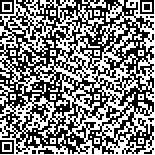|
|
| |
|
|
| 本文已被:浏览 1098次 下载 0次 |

码上扫一扫! |
| 城市公园绿地主客观植物多样性对居民
健康行为的影响 |
| 刘滨谊,常青,张琳,殷雨婷* |
|
|
| 作者简介:刘滨谊
1957年生/男/辽宁法库人/博士/第八届国务院学位委员会风景园
林学科评议组召集人/澳门科技大学特聘教授,人文艺术学院建
筑学与设计学博士生导师/同济大学风景园林学科专业委员会主
任,风景科学研究所所长,风景园林学博士生导师/研究方向为
人居环境学、景观感应分析评价、风景园林小气候、城乡绿地
系统规划、公园城市理论与实践/本刊副主编(上海 200092) |
|
| 摘要: |
| 高密度城市中公园绿地的生物多样性对人类健康福
祉的影响已引起广泛关注。然而,由于主、客观生物多样性与
可能引发的健康促进作用之间存在复杂影响,相关研究迄今仍
未形成一致性的结论。大部分既有研究重点关注心理健康所受
到的主、客观生物多样性影响,而针对体力活动等生理健康的
研究则相对较少。以客观实际测量及人们主观感知的植物群落
丰富度作为生物多样性指标,通过相关性分析、中介效应分析
等数据分析方法,探讨了上海市6所公园绿地内客观和主观生
物多样性对使用者健康行为的影响。研究结果表明,乔木、灌
木和草本等植物群落的客观多样性与主观植物多样性呈显著相
关,且二者均对人们在公园绿地内的健康行为产生积极影响。
此外,主观植物多样性在公园绿地使用者健康行为与客观植物
多样性之间产生了中介效应,即客观植物多样性通过影响主观
植物多样性,提升了人们到访公园绿地的频次和时长。研究成
果不仅进一步验证了生物多样性与人类健康的关系,还为在设
计实践中推动植物多样性和居民健康水平的共同提升提供了有
效依据。 |
| 关键词: 风景园林 公园绿地 生物多样性 人本感知 健
康行为 中介效应 |
| DOI:10.19775/j.cla.2024.11.0006 |
| 投稿时间:2024-07-31修订日期:2024-09-29 |
| 基金项目:上海市绿化和市容管理局科技项目(G239912) |
|
| The Influence of Measured and PerceivedBiodiversity on Human Health Behavior in UrbanGreen Spaces |
| LIU Binyi,CHANG Qing,ZHANG Lin,YIN Yuting |
| Abstract: |
| The influence of biodiversity in urban green spaces
(UGSs) on human health and well-being has been widely explored.
However, to date, the results of relevant studies have not been
conclusive, possibly because of the ambiguous pathways underlying
between the measured and perceived biodiversity, and biodiversity
and human health behavior preferences. Taking UGSs in Shanghai
as examples, this study intends to investigate how the measured
and perceived biodiversity in Shanghai UGSs may influence human
health behavior. Biodiversity indicators include the measured and
people perceived plant species richness, while health behavior
indicators are determined as visiting frequency, visiting duration and
intensity and diversity of health behavior. This study first examined
whether there is a difference between the measured and perceived
biodiversity; then their influences on human health behavior were
analyzed and compared. The major findings of the present study
support the hypotheses that: 1) the perceived plant species richness
is positively related with its measured level; 2) the measured and
perceived plant species richness both have beneficial effects on the
peoples' visiting frequency and duration of UGSs; and 3) perceived
plant diversity plays a mediatory role in the relation between human
health behavior and the measured plant diversity. The findings not
only contribute to the growing body of evidence of biodiversityhealth
linkages, but also shed light on how city planners might
augment these specific characteristics to improve the well-being of
urban dwellers. |
| Key words: landscape architecture urban green spaces (UGSs) biodiversity human perception health behavior mediation effect |
|
|
